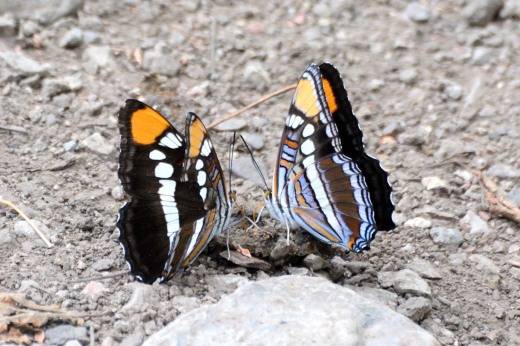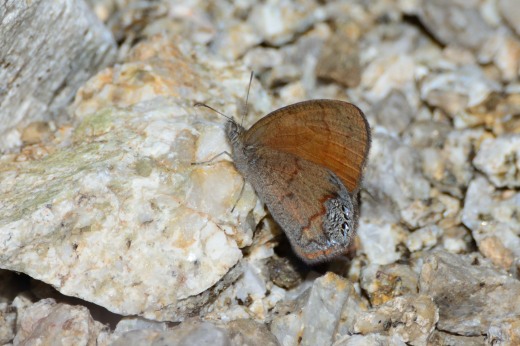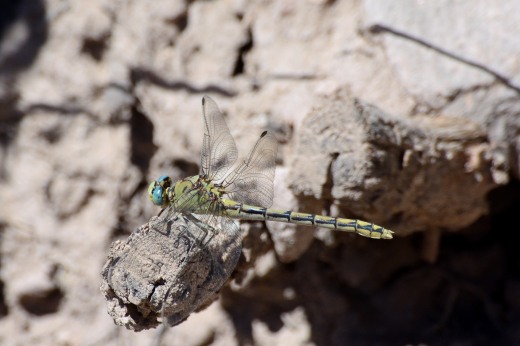The official start of autumn is only two weeks from now, and the signs are there that the changing season is on its way. The chamisa are starting to turn their bright yellow, purple asters are popping up everywhere, the cottonwoods are about to turn golden, the sun is setting noticeably earlier each day, and the temperature at night is getting cooler. Another signal is all the Roadrunners that have been cruising around for the last several weeks.
Although they seem to be around pretty much all year, for some reason they are much easier to see these days. I’m guessing most are fairly young and have only recently left the nest, but haven’t quite figured out how to avoid detection.
Twice this past week, it’s been off to Las Huertas Canyon, a leafy canyon with a year-round creek running through it. The Audubon Thursday Birders went there for the first time last week for some birding and an excellent pot-luck picnic. For some reason, we were surprised at how many birds we saw that morning. A number of Townsend’s and Wilson’s Warblers added to our total of almost 30 species, but it is obviously good bird habitat and should be good for birding year-round. Everybody also got good looks at all the Arizona Sister butterflies that were just everywhere in the canyon. Unlike most butterflies that have a cryptic or dull coloring for camouflage on the underside and more dramatic colors on the top, this one is quite colorful on both sides.
The other cool critters we saw on the first visit were a couple of caterpillars. One turned out to be that of a Tussock Moth.
Another, much larger one of a different species was making its way across the asphalt path. Certainly not one of the Arizona Sisters whose adults were flying about, I’m pretty sure this is the last instar of a Western Tiger Swallowtail before it turns into a chrysalis for the winter. Our other large yellow swallowtail, the Two-tailed Swallowtail (Papilio multicaudata), has a very similar caterpillar and to be sure of the species, it would help to know what host plant it was using. The comprehensive and incredibly useful Butterflies of America website had a picture of this brown form that helped me make the call.
Rebecca and I returned to Las Huertas a few days later to focus on butterflies, and she was quick to spot two more caterpillars at our first stop along the creek. The fact that this guy was hanging on a poplar leaf nailed it down as a Western Tiger Swallowtail.
On the same plant a little lower down was another one about half the size of the first one, but with identical markings. This one was fun to watch as it reacted instantly to an approaching ant, jerking around and showing off all those defensive mouth parts.
We did see a nice variety of butterflies in some of our usual spots, but a few clouds meant there weren’t as many sunning themselves on the damp sand or actively nectaring on the wildflowers. Despite our looking mostly at the ground for butterflies, a few birds also caught our attention, including one or two Townsend’s Warblers working through the vegetation and a Plumbeous Vireo that posed high in a tree for me.
More exciting since they are not seen all that often anywhere around here was a Band-tailed Pigeon that we may have surprised while it was getting a drink from the creek. It quickly flew a short distance away to a leafless tree for about a minute before it disappeared into the distance.
Last Sunday, I wandered over to Embudito Canyon a little earlier than usual and spotted a couple of Cactus Wrens, three of those young Roadrunners, and several (immature or female) Rufous Hummingbirds. The hummingbirds, just like this time last year, were greatly enjoying the viney plant with tiny red trumpet flowers that appears on the cholla cactus for just a few weeks every year.
A good day for butterflies, seeing more than a dozen species, including this Pahaska Skipper hiding in plain sight on a cholla.
It’s just about the right time of year to be seeing the less common but similar-looking Apache Skipper (Hesperia woodgatei), so I’ve been looking closely at every skipper I see. With the intermittent stream that is usually present in the summer at the end of the canyon pretty much non-existent now, my expectations weren’t too high for seeing many butterflies of any kind there. In the one or two damp areas left, however, were almost a dozen Arizona Sister and an unusually large number (six) of Canyonland Satyr butterflies.
Until this year, I had only seen the satyr on very rare occasions but have been seeing them here regularly since mid-May.
The day before, Rebecca and I headed up to the Gilman Tunnels in the Jemez Mountains hoping to spot that Apache Skipper where we’d seen it back in 2012, but were probably a week or so too early and were unsuccessful in that search. We did see a couple of pretty cool odonates that day, such as this Pale Snaketail
and a number of American Rubyspots.
Not too many butterflies out that morning, but we did spot some quite fresh Variegated Fritillaries, a rather common sighting but always fun to see.















I’ve never been out west. Your blog makes me want to. Your butterflies are similar and many that aren’t. Enjoyed
The picture showing the Arizona Sister from above and below is interesting because both angles are so different. Good caterpillar shots too.
Beautiful job capturing these brightly colored creatures in the harsh southwest sunlight, against the pale desert backgrounds!
I’m pretty sure your rufous is feasting on the Scarlet Morning Glory…the name makes it sound larger than it is. It is a tiny flower, and one of my favorites here in Florida. http://www.sharonsflorida.com/scarlet-morning-glory.htm
Thanks, Jeri. That flower’s popped up the last two years in a row and I’ve wondered just what it was.
Thanks for all the nice comments, everyone. Makes my day!